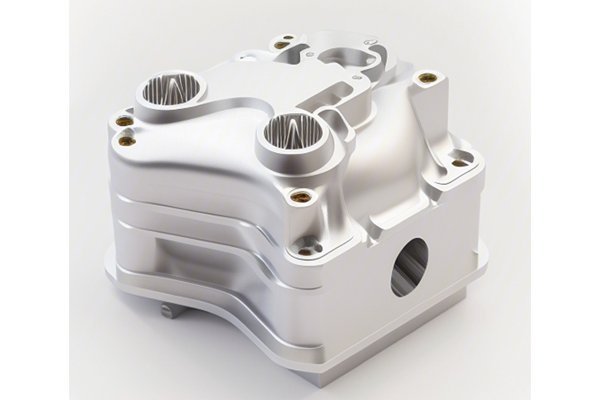: The Data that Matters
Did you know that the manufacturing industry is responsible for about 20% of global carbon emissions? As we progress deeper into the 21st century, the conversation surrounding sustainability in manufacturing has become increasingly urgent. Computer Numerical Control (CNC) processing, a modern manufacturing method widely used for crafting precision parts, is no exception. Are CNC processes contributing to the degradation of our planet, or can they serve as a model for more sustainable manufacturing practices? This blog aims to delve into the environmental impact of CNC processing and propose actionable solutions to make it more eco-friendly.
—
Understanding CNC Processing: A Brief Overview
Before we can assess the environmental implications, it’s crucial to understand what CNC processing entails. CNC machining involves the use of computer-controlled machines to perform a variety of tasks—cutting, milling, turning, and drilling materials such as metals, plastics, and wood with high precision.
Benefits of CNC Processing
The Environmental Impact of CNC Processing
While CNC processing presents numerous advantages in terms of productivity and efficiency, what does it mean for the environment?
CNC machines require considerable energy to operate due to their automated nature. According to studies, manufacturing machinery can account for about 30% to 50% of a facility’s energy usage. Higher energy consumption typically translates to increased CO2 emissions unless sourced from renewable energies.
Traditional machining methods often lead to waste as manufacturing processes tend to exceed initial material requirements. While CNC machining is known for its precision, if not optimized correctly, excess material removal can still occur.
The manufacturing of machined parts often requires chemical coolants and lubricants, some of which can be harmful to the environment when disposed of improperly.
The logistics involved in delivering raw materials and distributing finished products contribute further to carbon emissions.
Analyzing the Environmental Footprint
To truly understand the sustainability of CNC processing, we must analyze its entire lifecycle, often referred to as LCA (Life Cycle Assessment). This encompasses:
Solutions to Make CNC Processing More Environmentally Friendly
Understanding the environmental challenges is just the first step. Here are some feasible solutions:

Many CNC facilities can benefit from transitioning to renewable energy sources. Utilizing solar panels or wind turbines can drastically reduce the carbon footprint associated with machining operations.
Using software tools like CAD (Computer-Aided Design) can optimize designs, reducing unnecessary material use. Ensuring parts are designed for manufacturability minimizes wastage and improves efficiency.
Establish a system for recycling metal chips and other waste materials generated during machining. Several facilities now recycle aluminum and steel scrap, significantly reducing the amount sent to landfills.
Utilize environmentally friendly coolants and lubricants or consider dry machining methods where applicable. Biodegradable and water-based coolants can harbor fewer negative environmental impacts than traditional chemical options.
By considering local sourcing of raw materials and implementing just-in-time production strategies, companies can limit their transportation emissions. This will significantly reduce the overall carbon footprint of the supply chain.
Integrating AI and machine learning systems can optimize operational processes, resulting in decreased energy consumption, reduced waste, and improved overall efficiency.
Industry Case Studies: Real-World Applications
To give you a clearer picture, here are some examples of companies leading the way in eco-friendly CNC practices:
Tesla is not only advocating for electric vehicles but has also improved its manufacturing processes by switching to renewable energy sources for CNC machining and making recycling a core part of their operations.
GE has implemented advanced machining techniques that promote energy efficiency and waste reduction. They utilize additive manufacturing alongside CNC processing to create improved designs that require fewer materials.
By adopting eco-friendly lubricants and recycling waste materials, Raytheon has shown that even organizations in defense and aerospace can prioritize sustainability.
The Future of CNC Processing and Sustainability
As technology continues to advance, the future of CNC processing looks promising. Innovations such as additive manufacturing, real-time monitoring systems, and AI-driven optimization will allow manufacturers to further decrease their environmental footprint.
The Role of Continued Research
Ongoing research in nanomaterials, biodegradable substances, and eco-friendly manufacturing techniques will also play a vital role in enhancing CNC processing’s sustainability. These efforts will help the manufacturing sector align with global sustainability goals.
: A Sustainable Path Forward
In summary, while CNC processing does pose challenges in terms of environmental impact, there are numerous actionable steps that manufacturers can implement. By adopting renewable energy solutions, optimizing designs, recycling waste materials, and utilizing eco-friendly lubricants, CNC processing can move toward sustainability.
This blog serves as an essential reminder of the responsibilities manufacturers hold in mitigating their environmental impacts. As we strive for a greener future, it is crucial to recognize how CNC processing can evolve to meet these goals—not only for the benefit of the environment but for the betterment of society as a whole. The conversation around sustainability is ongoing, and every step taken toward improvement is a step toward preserving our planet.
In a world facing significant climate challenges, the pursuit of sustainability in manufacturing cannot be overlooked. As readers and stakeholders, you play a vital role in pushing for these changes. Let’s champion a future where CNC processing exemplifies eco-friendliness and innovation.






